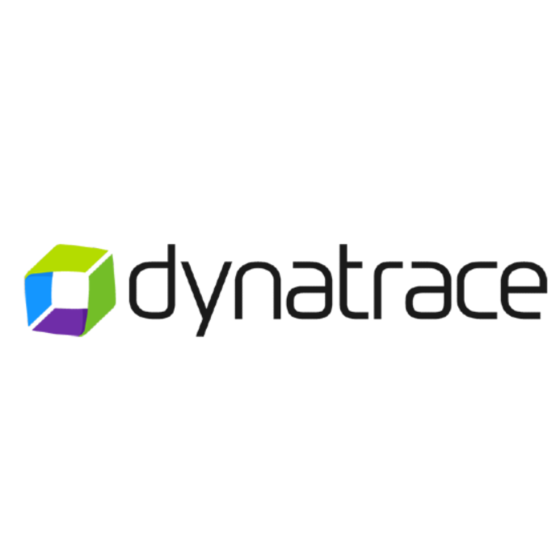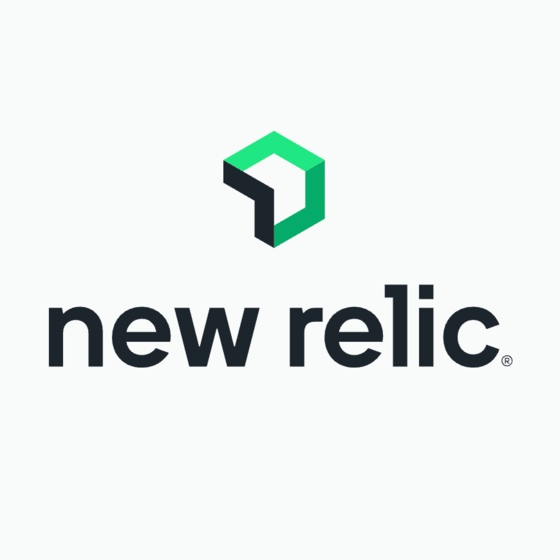10 Best DevOps Automation Tools Shortlist
Here's my pick of the 10 best software from the 22 tools reviewed.
Our one-on-one guidance will help you find the perfect fit.
Navigating the complexities of DevOps can feel overwhelming—disjointed workflows, manual errors, and painfully slow deployment cycles often leave teams frustrated and underperforming. These challenges not only drain productivity but also jeopardize the reliability of your software delivery pipeline. If you’re here, it’s likely because you’re seeking a way to automate these bottlenecks and create a smoother, more collaborative development and operations process.
With years of experience tackling these very frustrations—optimizing Linux environments, debugging JavaScript-heavy apps, and integrating countless DevOps tools—I’ve seen what works and what doesn’t. DevOps automation tools are designed to simplify and streamline everything from code integration to infrastructure management, helping teams achieve faster, more reliable deployments. Let me leverage my expertise to guide you through the options that deliver real results.
What Is A DevOps Automation Tool?
A DevOps automation tool streamlines the process of software development and operations, bridging the gap between development and IT operations teams. These tools are vital for the efficient building, testing, and deploying of applications, allowing for continuous integration and continuous delivery (CI/CD).
Utilized predominantly by developers, operations teams, and IT professionals, these tools foster collaboration, reduce manual tasks, improve code quality, and speed up delivery times, ensuring more frequent and reliable releases.
Best DevOps Automation Tools Summary
| Tool | Best For | Trial Info | Price | ||
|---|---|---|---|---|---|
| 1 | Best for no-code test automation | 14-day free trial | From $212/month | Website | |
| 2 | Best for automated incident response | Free trial + demo available | Pricing upon request | Website | |
| 3 | Best for application performance insights | 30-day free trial + demo available | From $395/year (billed annually) | Website | |
| 4 | Best for AI-driven full-stack monitoring | 15-day free trial + demo available | From $0.0001 | Website | |
| 5 | Best for real-time performance insights | Free plan + demo available | Pricing upon request | Website | |
| 6 | Best for configuration management | Free trial available | From $59/node/month (billed annually) | Website | |
| 7 | Best for IT automation workflows | Not available | Free to use | Website | |
| 8 | Best for Kubernetes-based CI/CD | Not available | Free to use | Website | |
| 9 | Best for open-source project integration | Free demo available | From $13.75/month (billed annually) | Website | |
| 10 | Best for continuous delivery pipelines | Not available | Open source project and available for free | Website |
-

Docker
Visit WebsiteThis is an aggregated rating for this tool including ratings from Crozdesk users and ratings from other sites.4.6 -

Pulumi
Visit WebsiteThis is an aggregated rating for this tool including ratings from Crozdesk users and ratings from other sites.4.8 -

GitHub Actions
Visit Website
Best DevOps Automation Tools Reviews
Reflect is a no-code, AI-driven testing tool that helps you automate your web application testing without writing a single line of code. It's specifically designed to make the process of creating, managing, and running tests as straightforward as possible for you and your team.
Why I Picked Reflect:
One reason I picked Reflect is its use of generative AI, which adapts your tests as your application evolves. This feature minimizes the time you spend on maintaining your tests and ensures that your testing stays relevant even as your application changes.
I also like Reflect's support for visual testing. This capability lets you capture screenshots of your application during tests to identify visual discrepancies. It's a great way to ensure that your application's user interface looks exactly as intended across different environments.
Standout Features and Integrations:
Other features include the ability to run tests across multiple browsers, offering a wide range of browser compatibility to ensure your application works well for all users. Reflect also supports API testing, allowing you to validate the backend services of your application.
Integrations include Slack, Jira, Linear, Azure DevOps, Bitbucket, CircleCI, GitHub, Jenkins, and Codefresh.
Pros and cons
Pros:
- No-code test creation
- AI-powered test maintenance
- Comprehensive CI/CD integration
Cons:
- Limitations to mobile app testing
- Could offer more customization options for test configurations
Site24x7 is an AI-powered observability platform designed to help you monitor your entire IT environment. It offers tools to track the performance of websites, servers, networks, applications, and cloud services.
Why I Picked Site24x7:
You can set up automated responses to specific incidents, like restarting servers or running scripts when certain thresholds are met. This proactive approach helps prevent downtime and reduces the need for manual interventions.
Another valuable feature is Site24x7's AIOps. By analyzing patterns and predicting potential issues, AIOps enables your team to address problems before they affect users. This predictive analysis supports a more stable and reliable IT environment.
Standout Features and Integrations:
Other features include real user monitoring to capture and analyze user interactions, synthetic monitoring to simulate user transactions, and application performance monitoring to identify bottlenecks in your applications. Integrations include ServiceNow, PagerDuty, Opsgenie, Jira, ManageEngine AlarmsOne, ManageEngine ServiceDesk Plus, Slack, Microsoft Teams, Zoho Cliq, Amazon EventBridge, Zapier, and Webhooks.
Pros and cons
Pros:
- Comprehensive monitoring capabilities across various IT infrastructure components
- Reliable real-time alerts that enable prompt issue resolution
- Flexible customization options for dashboards and reports
Cons:
- Configuration complexity can be challenging for new users
- Limited integration options with certain third-party tools
New Product Updates from Site24x7
Amazon CloudWatch Logs Integration
Site24x7 integrates with Amazon CloudWatch Logs, offering centralized log analytics, real-time alerts, and metric correlation. Monitor log groups and gain region-level insights within Site24x7. More details at Site24x7 What's New.
Best for application performance insights
ManageEngine Applications Manager helps you monitor applications, servers, databases, containers, and cloud services from one dashboard. It’s built for DevOps and SRE teams that need to keep tabs on how performance impacts reliability and delivery cycles.
Why I Picked ManageEngine Applications Manager:
I picked Applications Manager because it gives you performance insights that go beyond surface-level metrics. If your team’s struggling to diagnose slow transactions or pinpoint latency in a distributed app, this tool gives you code-level visibility and end-to-end tracing. That makes it a strong fit for DevOps teams trying to reduce deployment risks and shorten the feedback loop.
It also supports multi-cloud monitoring and dependency mapping, which helps you visualize how components interact across AWS, Azure, and on-prem environments. If part of your delivery pipeline runs in the cloud, this visibility can help you detect regressions early.
Standout Features and Integrations:
You get tools for synthetic transaction testing and real user monitoring so you can track both pre-deployment behavior and actual user experience. Its smart alerting uses dynamic thresholds to reduce noise, and you can configure custom dashboards to highlight what matters most to your team. Container monitoring includes Docker and Kubernetes support, and the platform also offers automated discovery and service mapping. Integrations include ServiceDesk Plus, OpManager, Site24x7, ADManager Plus, Log360, Endpoint Central, CloudSpend, and Analytics Plus.
Pros and cons
Pros:
- Built-in service mapping and AI-assisted alerting
- Custom dashboards help visualize performance metrics
- Monitors applications, servers, and databases in one platform
Cons:
- Not ideal if you're only looking for cloud-native observability
- May require system reboot when applying major updates
Dynatrace is a comprehensive monitoring tool that encompasses everything from your applications to your infrastructure, all while being powered by artificial intelligence. This AI-driven approach offers deeper insights and predictions, making it an exceptional choice for those prioritizing automated insights in their monitoring setup.
Why I Picked Dynatrace:
When choosing the right monitoring tool for a comprehensive view of IT environments, Dynatrace kept capturing my attention. Its AI-driven approach differentiates it from many in the market. In my assessment, comparing it with others, I determined that its ability to autonomously diagnose issues makes it invaluable.
For these reasons, I'm confident in stating it's the 'best for AI-driven full-stack monitoring.'
Standout Features and Integrations:
Dynatrace excels with its AI-powered analytics, which can pinpoint issues in the infrastructure or application layers with a high degree of precision. The tool offers cloud-based monitoring, covering everything from Docker containers to full-scale cloud infrastructure on AWS, Azure, and Google Cloud.
Its end-to-end monitoring encompasses both applications and their dependencies, ensuring nothing is overlooked.
Pros and cons
Pros:
- Robust integrations with popular cloud platforms and other essential tools.
- Comprehensive full-stack monitoring, from applications to infrastructure.
- AI-driven analytics provide automated insights and diagnoses.
Cons:
- The vast array of features might be more than smaller teams require.
- The cost can become significant for larger organizations.
- May have a steeper learning curve for those new to AI-driven monitoring.
New Relic is a performance monitoring tool that offers in-depth visualization of application health, infrastructure, and user experience. With its advanced metrics and graphs, it caters specifically to businesses and developers aiming to gain real-time insights into their system's performance.
Why I Picked New Relic:
In my quest for performance monitoring solutions, I found myself repeatedly selecting New Relic for its unparalleled insights. What determined my choice was its deep functionality paired with an intuitive interface. Amongst its competitors, it stands out for providing actionable real-time performance data.
Thus, in my judgment, New Relic truly fits the bill when it comes to 'best for real-time performance insights.'
Standout Features and Integrations:
New Relic shines with its dashboards that allow teams to monitor everything from application deployment to the intricate dependencies within their system. The tool integrates with other essential platforms like AWS, Azure, and Google Cloud, making it an invaluable asset for DevOps teams. Moreover, its API offerings allow developers to further tailor the tool to their specific needs.
Pros and cons
Pros:
- Robust API for custom integrations and data manipulation.
- Offers integrations with major cloud platforms and various other tools.
- Provides a comprehensive view of application health and dependencies.
Cons:
- Requires a learning curve to fully utilize its vast array of tools and features.
- Cost can be a constraint for smaller teams or startups.
- Might be overwhelming for newcomers due to its depth of features.
Chef is a powerful configuration management tool designed to automate infrastructure provisioning, ensuring that system configurations are consistent and replicable across various platforms. By providing a solution to manage infrastructure as code, Chef aligns directly with the essence of efficient configuration management, ensuring high-quality system stability and uniformity.
Why I Picked Chef:
Selecting a tool for the list, especially for something as integral as configuration management, requires judicious evaluation. In my judgment, after comparing multiple tools, Chef stood out due to its domain-specific language and the agility it offers to DevOps teams. This made me determine that Chef, with its comprehensive ecosystem and agentless architecture, is undoubtedly the 'best for configuration management.'
Standout Features and Integrations:
Chef's standout functionality lies in its ability to treat infrastructure as code, allowing repetitive tasks to be automated with ease and ensuring that configurations remain consistent. It also offers playbooks and recipes, which provide modular configurations that can be reused across different systems.
Chef integrates with cloud infrastructure providers like AWS, Azure, and Google Cloud, and offers plugins that connect it to version control systems like GitHub, improving collaboration among development teams.
Pros and cons
Pros:
- Use of playbooks and recipes ensures modular and replicable configurations.
- Extensive integration with cloud platforms and version control systems.
- Infrastructure as code approach simplifies the development process.
Cons:
- Integration with some legacy systems can be challenging.
- Requires consistent updates to recipes and playbooks to manage newer configurations.
- Might present a steeper learning curve for those new to the infrastructure as code methodology.
Ansible is a powerful open-source tool designed to simplify tasks such as configuration management, application deployment, and task automation across various systems. Its agentless architecture and robust functionality make it ideal for automating complex IT workflows, aligning perfectly with its distinction as best for this role.
Why I Picked Ansible:
Through a careful process of selecting and comparing various tools for IT automation, Ansible consistently stood out. Its agentless nature, combined with its domain-specific language for scripting, presents a unique advantage over its peers. I chose Ansible for its ability to integrate with a multitude of platforms and operating systems, justifying its position as the 'best for IT automation workflows.'
Standout Features and Integrations:
Ansible boasts an intuitive playbook system that allows for straightforward scripting, minimizing the chances of human error. It's also highly scalable, catering to both small and large development teams. Integration-wise, Ansible plays well with popular cloud platforms like AWS, Azure, and Google Cloud, allowing for easy provisioning and management of cloud infrastructure.
Its compatibility with Docker ensures container orchestration is a breeze, while its modules system further extends its functionality.
Pros and cons
Pros:
- Playbooks offer a readable and straightforward scripting method using YAML.
- Broad integration with cloud platforms and Docker improves IT workflow automation.
- Agentless architecture means no additional software or agents to install on managed nodes.
Cons:
- As it's open-source, support may vary unless opting for the paid enterprise version.
- Initial setup can be more complicated compared to some cloud-based SaaS tools.
- While it has a gentle learning curve, mastering advanced features might be challenging.
Tekton emerges as a flexible, Kubernetes-native open-source framework designed for creating continuous integration and delivery (CI/CD) systems. Given its deep integration with Kubernetes, Tekton optimally suits teams looking to deploy within a Kubernetes environment, supporting its stance as the best tool for Kubernetes-based CI/CD.
Why I Picked Tekton:
During my selection process, Tekton stood out distinctly due to its Kubernetes-first architecture. This choice was determined after comparing various tools and judging their integration capabilities. I opine that, for teams entrenched in Kubernetes, Tekton is the preeminent tool due to its profound alignment with the Kubernetes ecosystem.
Standout Features and Integrations:
Tekton champions the notion of using pipelines to describe the deployment process, offering high-quality functionality right from source code to application deployment. It employs YAML for configuration, ensuring a structured approach to pipeline creation.
Integration-wise, Tekton dovetails with popular version control systems like GitHub, and aligns with cloud platforms such as AWS, Google Cloud, and Azure, improving its utility across various cloud infrastructures.
Pros and cons
Pros:
- Wide array of integrations with version control systems and major cloud providers
- Robust YAML-based pipeline creation, fostering clarity in the development process
- Kubernetes-native, ensuring better compatibility with Kubernetes deployments
Cons:
- Open-source nature requires dedicated team members for updates and maintenance.
- Lacks some out-of-the-box plugins which might necessitate manual interventions
- Might present a learning curve for those unfamiliar with Kubernetes
Travis CI has firmly established itself as a cloud-based platform that empowers developers to test and deploy their applications with confidence. Catering to a multitude of developers, especially in the open-source community, Travis CI’s robust integration capabilities make it a favorable choice for those working on open-source projects.
Why I Picked Travis CI:
In the process of judging and selecting from a plethora of CI/CD tools, Travis CI distinguished itself due to its undying commitment to the open-source ecosystem. After comparing and having opinions based on my analysis, I chose Travis CI for its innate ability to integrate with open-source repositories on GitHub. I believe Travis CI truly shines as the 'Best for open-source project integration' given its adaptability and understanding of the needs of open-source projects.
Standout Features and Integrations:
One of Travis CI's most commendable features is its ability to automatically detect and run tests on every Github push or pull request, reducing repetitive tasks for developers. Additionally, with its Docker integration, Travis CI provides flexibility in testing applications in various environments.
Among integrations, Travis CI prominently interfaces with GitHub, allowing developers to automatically trigger builds based on source code changes, and with deployment tools like AWS, improving application deployment processes.
Pros and cons
Pros:
- Rich ecosystem with a multitude of plugins and dependencies ensuring versatility for developers
- Docker integration supports testing in various environments, catering to diverse application deployment needs
- Strong support for open-source projects with easy integration to GitHub repositories
Cons:
- Documentation, while extensive, can sometimes be overwhelming for newcomers.
- Build speeds can sometimes lag, depending on the complexity of the project
- Might not be the first choice for private projects due to cost implications
GoCD is a comprehensive open-source tool dedicated to helping DevOps teams streamline their continuous integration and delivery mechanisms. Its strength lies in orchestrating complex workflows, making it stand out as best for handling intricate continuous delivery pipelines.
Why I Picked GoCD:
In the vast landscape of DevOps tools, selecting the right fit involved rigorous comparison and judgment. I chose GoCD mainly because of its unmatched visualization capabilities and its approach to the development lifecycle, making application deployment a breeze.
When I considered its end-to-end functionality and the efficiency it offers for CD pipeline management, I was convinced it's best for continuous delivery pipelines.
Standout Features and Integrations:
GoCD excels with its robust value stream mapping and detailed traceability, enabling teams to monitor changes from the initial commit to the final release. Its functionality benefits significantly from native support for Docker, streamlining container orchestration. In terms of integrations, GoCD harmonizes with key repositories like GitHub and also interfaces effortlessly with cloud platforms such as AWS and Azure.
Pros and cons
Pros:
- Supports multiple cloud infrastructure providers
- Strong Docker and Kubernetes integration
- Detailed visual representation of CD pipelines
Cons:
- Some desired plugins might be absent or need manual configuration.
- Pricing may be on the higher side for startups
- Initial setup can be intricate for beginners
Other DevOps Automation Tools
Below is a list of additional DevOps automation tools that I shortlisted, but did not make it to the top 10. They are definitely worth checking out.
- Terraform
For infrastructure as code
- Jenkins
For extensible automation server
- Drone
For container-native automation
- Copado
For DevSecOps in Salesforce
- Kubikk
For Kubernetes DevOps practices
- Bitbucket
Good for integrated Git code hosting
- Nagios
Good for comprehensive IT infrastructure monitoring
- GitLab CI/CD
Good for complete DevOps lifecycle coverage
- CircleCI
Good for continuous integration and delivery
- Spinnaker
Good for multi-cloud deployments
- Airplane
Good for building and scaling internal tools
- Rancher
Good for Kubernetes cluster management
Selection Criteria For Choosing the Best DevOps Automation Tools
In my journey exploring the world of DevOps automation tools, I've delved deep into their functionalities and features. I've tested numerous tools, evaluating dozens specifically tailored to automation in the DevOps realm. Among the myriad options available, there were certain criteria I deemed paramount for these tools to stand out. Here, I delve into the criteria that mattered most to me:
Core Functionality
- Continuous Integration & Deployment (CI/CD): Ability to automate the entire process of integrating code changes and deploying them to production.
- Infrastructure as Code (IaC): Enables the provisioning and management of infrastructure using code and software development techniques.
- Configuration Management: Ensures that an application consistently performs as it should, irrespective of where it is deployed.
- Monitoring & Alerts: Real-time tracking of system performance and immediate notifications for any anomalies.
- Container Orchestration: For DevOps platforms like Docker, the capability to manage and orchestrate containers is essential.
Key Features
- Cross-Platform Support: Compatibility with various operating systems like Windows, Linux, and Mac OS ensures a wider user base and functionality.
- Integration Capabilities: The ability to connect with other platforms and tools, including cloud providers like Amazon, Azure (Microsoft), and Bamboo.
- Customizable Notifications: Dynamic alert mechanisms that allow for granular control over what you get notified for and how.
- Version Control Integration: Direct connections to tools that handle source code versions, allowing for easier tracking and management.
- Runtime Environment Management: Offering virtual machine configurations, ensuring applications run consistently across different environments.
- Extensibility: Providing a wide range of plugins or extensions to improve the tool's capabilities.
Usability
- Intuitive User Interface (UI): For a DevOps tool, a clear dashboard displaying metrics, ongoing processes, and system health is a must. Quick access to critical functionalities saves time.
- Easy Onboarding Process: Given the complexity of some DevOps tasks, a step-by-step setup guide or wizard can make a world of difference to new users.
- Robust Customer Support: Availability of a comprehensive knowledge base, training programs, or learning libraries ensures smoother resolution of queries or issues.
- Role-Based Access: In a team setting, being able to easily assign and configure role-based access ensures that the right people have the right permissions.
- Interactive Workflows: For orchestration tools, visual workflows, or drag-and-drop functionalities simplify complex processes.
The world of DevOps automation tools is vast and diverse. The right build automation software can significantly streamline tasks and improve efficiency. By focusing on the criteria outlined above, I've pinpointed tools that are not only functional but also user-friendly and adaptable to varied needs.
Most Common Questions Regarding DevOps Automation Tools (FAQs)
What are the benefits of using DevOps automation tools?
Utilizing DevOps automation tools offers several advantages:
- Efficiency Boost: They streamline the software development lifecycle, automating repetitive tasks and reducing the chance of human error.
- Enhanced Collaboration: These tools foster better communication between development and operations teams, leading to a more cohesive workflow.
- Real-time Monitoring: Many of these tools provide insights into system performance, identifying issues before they escalate.
- Rapid Deployment: Faster and more frequent deployment of features and fixes becomes feasible, improving the end-user experience.
- Infrastructure Management: Provisioning and managing AWS DevOps tools and other cloud-native software becomes more straightforward, ensuring resources are optimized.
How much do DevOps automation tools typically cost?
The pricing of DevOps automation tools can vary widely based on features, scalability needs, and the specific tool in question. Some start as low as $7/user/month, while more comprehensive solutions can exceed $100/user/month or even charge based on usage or specific metrics.
What are the common pricing models for these tools?
Several pricing models are prevalent in the DevOps tooling landscape:
- Per User: Charges are based on the number of users accessing the tool.
- Usage-Based: Costs depend on the amount of usage, such as API calls, storage, or other metrics.
- Flat Rate: A single price covers all features and usage up to a certain limit.
- Tiered: Different pricing levels offer varying features, with more advanced tiers providing additional capabilities.
What's the typical range of pricing for these tools?
For most mid-tier offerings, you can expect a range between $20 to $70/user/month. However, enterprise-level tools with extensive features can be much pricier.
Which are some of the cheapest DevOps automation tools?
Tools like Jenkins and Travis CI often come up as more affordable options, especially as they have open-source versions.
Which tools are on the higher end of the price spectrum?
Higher-end tools include offerings like Dynatrace and Splunk, which provide extensive monitoring, analytics, and AI-driven insights.
Are there any free DevOps automation tools available?
Yes, several tools offer free versions, often with limited features or capacity. Examples include Jenkins, GitLab CI/CD, and Travis CI. However, to access advanced functionalities or to scale up, upgrading to paid plans might be necessary.
Do the costs of these tools include integrations with other software?
Typically, basic integrations with popular platforms (e.g., AWS, Github, Slack) are included. However, more niche or advanced integrations might require additional DevSecOps tools or come with an extra cost.
More DevOps Tools Reviews
Summary
Choosing the perfect DevOps automation tool isn't just about picking the most popular one. It's about understanding the core functionalities the tool offers, discerning the key features that align with your unique requirements, and ensuring the tool's usability complements your team's workflow. By diving into the intricacies of these tools, from their capabilities in CI/CD to their runtime environment management, I can form a holistic view of what makes a tool stand out.
Key Takeaways
- Function over fame: Always prioritize a tool's core functionality over its market popularity. Ensure it aligns with your specific needs, be it in continuous deployment, monitoring, or container orchestration.
- Integration is King: A tool's ability to integrate with other platforms, cloud services, and version control systems can significantly streamline your DevOps processes.
- User experience matters: Beyond just features, consider the tool's usability. Role-based access, an intuitive interface, and robust customer support can greatly influence productivity and team collaboration.
By keeping these points in mind and rigorously evaluating based on the outlined criteria, you're well on your way to selecting a DevOps automation tool that not only meets but exceeds your expectations.
What Do You Think?
I've put significant effort into curating this list based on my experiences and research. However, the world of DevOps automation tools is vast and ever-evolving. If you've come across a tool that you think deserves a mention, or if you're passionate about a specific solution I may have overlooked, I'd genuinely appreciate your insights.
Please drop your recommendations or thoughts in the comments or reach out to me directly. Let's collectively make this guide even better.

























